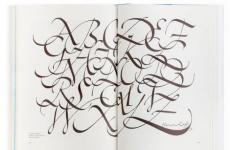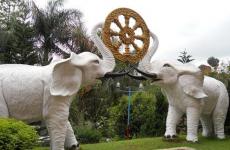Rules for writing syncwine. Rules for compiling a syncwine on literature in different classes Sinkwine on the topic of reform
In the early 20th century, the American poet Adelaide Crapsey developed a new form of five-line poem, the cinquain. A lot of time has passed since then, and today many types of syncwines have appeared, which will be discussed below.
Traditional
A form of a poem consisting of five lines and based on the count of syllables in each line. Its structure looks like this: 2-4-6-8-2. That is, the first line should contain a word or phrase of two syllables, the second - of four, the third - of six, and so on. Traditional cinquain can be either rhymed or not.
As an example, we can cite the works of Irina Yanakova:
God gave
crow cheese,
She was flattered by flattery
You don't have to open your mouth
For nothing.
Yesterday
The hall is empty
When your poems
On stage with expression you
Read.
Back
Five-line form with reverse verse sequence only. That is, in the first line - a word or phrase of two syllables, in the second - of eight, the third - of six, etc. The structure is: 2-8-6-4-2.
An example of such a syncwine from Ariel Dororo:
Directly
There is a storm before us
Turning into a river
freeways
Vector
Mirrored
A poetic form of two five-line stanzas, where the first stanza is the traditional cinquain, and the second is the reverse.
An example from the same Ariel Dororo:
Grozen
Thunder rumble
As if in clouds of gunpowder
Blown up by a spark of a meteor
Just
Soon
The sky will become a black sea
Even the gills of the echo
They smell like fish
With fur
Butterfly cinquain
A nine-line poem form with a syllabic structure of 2-4-6-8-2-8-6-4-2.
And again, an example from the most talented Ariel Dororo:
Into the wild
strange dance
Like prominences
Skeleton lightning bolts
This
Seen from the abyss of Lethe
Atlantis demons
Went out to spar
Mass
Crown of cinquains
A completed poem consisting of five traditional syncwines.
An example from Alena Timakova:
All day
stubborn rain
Knocking on my window.
What a monotonous blues.
I smoke...
Asphalt
Wet through
And turn off the light
tearful, gray
At home.
Yesterday
You called.
You were a little drunk
And guiltily said to me:
"I love"…
Steps.
I'll open the door.
And the heart is like a ball
Ready to jump into your arms
Yours.
Be quiet...
Close eyes…
We will listen to the rain
And come up with music
Words…
Garland of cinquains
The most beautiful variation, in our opinion. It consists of a crown of syncwines with the addition of a sixth syncwine, in which the first line is taken from the first, the second from the second, the third from the third syncwine, etc.
An example from Yulia Zaitseva:
Midnight.
Sleep doesn't come.
Open window.
Looking into the stardust
I believe
What's there
In the moonlight
The Little Prince Lives
And he also looks
Sky.
Sees:
There, by the window,
Lonely shadow.
Shouts: “Flower, is that you?!“
In reply
Kivnu
And laugh
Easy and safe...
“How, after all, it’s good that
This
At night
We met!
I'm happy because
That you really exist
You are…"
Midnight.
In the moonlight
Lonely shadow...
How good is that
You are.
Didactic
Unlike the previous types, in this five-line form the text is not based on syllabic dependence, but on the semantic and syntactic assignment for each line.
The first line is one noun or pronoun expressing the main theme of the syncwine.
The second line is two adjectives or participles describing the features and properties of the chosen topic.
The third line is three verbs or gerunds describing actions within the topic.
The fourth line is a four-word phrase expressing the author's attitude to the subject being described.
The fifth line is a single summary word describing the essence of the subject.
Strict adherence to the rules for writing didactic syncwine is not necessary. For example, in the fourth line, you can use three, five, or six words, and in the fifth, two words.
An example of a syncwine on the theme "House":
House.
Handsome, dear.
Build, lease, sell.
Someone lives in it.
Building.
The ability to summarize information, to express complex ideas, feelings and ideas in a few words is an important skill. It requires thoughtful reflection based on a rich conceptual stock.
With the external simplicity of the form, cinquain is a quick but powerful tool for reflection, synthesis and generalization of concepts and information. It teaches you to use concepts meaningfully and determine your attitude to the problem under consideration, using only 5 lines.
The creation of syncwines - five-line "poems" - allows not only to summarize information on any topic, but also develops critical thinking. To compose a successful cinquain, you need to analyze all the information about the event, person, concept, and choose the most important.
A bit of theory.
cinquain - a five-line poetic form that arose in the United States at the beginning of the 20th century under the influence of Japanese poetry. Later it began to be used (recently, since 1997, and in Russia) for didactic purposes, as an effective method for the development of figurative speech, which allows you to quickly get results. A number of methodologists believe that syncwines are useful as a tool for synthesizing complex information, as a cutoff for assessing the conceptual and vocabulary of students
The traditional cinquain consists of five lines and is based on counting the syllables in each verse: its syllabic structure is 2-4-6-8-2, for a total of 22 syllables (17 in haiku, 31 in tanka).
- Reverse syncwine - with a reverse sequence of verses (2-8-6-4-2);
- Mirror syncwine - a form of two five-line stanzas, where the first is traditional, and the second is reverse syncwines;
- Butterfly cinquain - a nine-line form with a syllabic structure 2-4-6-8-2-8-6-4-2;
- Crown of syncwines - 5 traditional syncwines forming a complete poem;
- A garland of cinquains is an analogue of a wreath of sonnets, a crown of syncwines, to which a sixth syncwine is added, where the first line is taken from the first syncwine, the second line from the second, etc.
Didactic cinquain developed in the practice of the American school. In this genre, the text is based not on syllabic dependence, but on the content and syntactic specification of each line.
The procedure for compiling a syncwine allows you to harmoniously combine the elements of all three main educational systems: information, activity and personality-oriented.
How to work with syncwines:
- Compilation of a new syncwine.
- Compilation of a short story on the finished syncwine using the words and phrases included in the syncwine.
- Correction and improvement of the finished syncwine.
- Analysis of an incomplete syncwine without specifying the theme of the syncwine and determining the name of the theme of this syncwine.
Organizational forms of work with syncwines:
- Independently while doing homework.
- Self-guided practice.
- As part of a small group, followed by a competition for the best cinquain, compiled on a chosen topic.
- As part of a study group with the participation of a teacher acting as a leader, helping the group to compose a syncwine.
- When performing a control task for compiling a syncwine, writing a story on a syncwine or determining the topic of an incomplete syncwine ..
Here are some examples of syncwines by my students.
 Theme "Zheleznogorsk", the subject of the ORR, grade 11.
Theme "Zheleznogorsk", the subject of the ORR, grade 11.
Zheleznogrsk
Closed, mysterious
Build, design, implement
Innovation is our future
GCC.
Zheleznogorsk
small, closed
work, enjoy, be sad
The best place on earth because my mother is here
Darling.
(Pleskach Yu.)
Theme "Law", social science, grade 6.
Law
Strict, fair
Observed, violated, punished
Everyone must obey the law
rule
Shchenina S. Grade 7
Law
fair, necessary
Protects, preserves, acts
The law is the same for everyone
A short poem without rhyme, consisting of five lines, is called a syncwine. Sinkwine can be of different types, but the most popular today is the "didactic sequencing", which is widely used in educational institutions. Consider the ways of compiling a sequence.
What is cinquain: traditional and didactic forms
In the early 20th century, the American poet, Adelaide Crepsey, came up with a form of five-line poem based on counting the syllables in each line. She was inspired to this action by Japanese tanka and haiku. The semantic structure of the traditional syncwine she invented had a syllabic structure 2 - 4 - 6 - 8 - 2, i.e. there are two syllables in the first line, three in the second, etc.). As a result, the poem consisted of 22 syllables.
The first, the use of didactic syncwine, was used by schools in America. Compared to other types of syncwine, this option was based on a semantic assignment in each line, and not on counting syllables.
The classic (strict) didactic cinquain is built like this:
- in the first line - the presence of a pronoun or noun, that is, one word that is the theme of syncwine;
- in the second line - the presence of a participle or an adjective describing the properties of the word from the first line;
- in the third line - the presence of a gerund or a verb that tells about the actions of the word from the first line;
- in the fourth line, the sentence should consist of four words, with the help of which the poet’s personal relationship to the theme of syncwine is revealed;
- the fifth line consists of one word of any part of speech, revealing the idea of the topic.
The resulting poem can touch on any topic.
Didactic cinquain allows indentation from the rules. For example, a resume or main topic may not consist of one word, but combinations of three to five words, and only predicates can be used in the description of actions.
Composing a syncwine
No literary talent or special knowledge is required to compose sequins. All that is required is proper mastering of the form. As a training, it is better to take the topic most known and familiar to the author, starting with a simple one. For example, take the topic “soap”.
- The first line contains the word "soap".
- The second line should contain two adjectives reflecting the properties of this item. What kind of soap? By means of listing adjectives in the mind that describe how a specific soap (violet, orange, liquid, baby, etc.) and in general (fragrant, slippery, foaming), two suitable words are selected. As a result, the choice was made on such words as: "strawberry, transparent".
- The third line needs a description of the three actions of the main theme. At this stage, students find it difficult to choose words, since actions mean not only the actions of the object itself, but also the influence on this object from the outside, and its influence on others. For example, in addition to the fact that soap can smell and lie in a soap dish, it can fall out of your hands or slip out, or make you cry, and you can also use it to wash. As a result, we will opt for this option: "Bubble, smell, wash."
- In the fourth line, the author should express his personal attitude to the main topic. Schoolchildren, at this stage, may also have difficulty in choosing words, since soap cannot cause any particular relationship among those who are not an avid cleaner, a fan of this subject, or simply do not give much pleasure to the washing process . Here one should take into account not only the personal attitude of the author, but also the challenge of certain associations associated with the main theme.
For example, you can take such a fact from the author’s biography as breaking his knee as a result of the fact that he once slipped on soap, or talk about the independent preparation of this subject. Regardless of the chosen moments from life, which are taken as the basis for writing the fourth line, it must be remembered that the thought must fit into three or five words. For example, "Hands are washed before eating." One can also give an example of tasting a soap that has a pleasant smell, as a result of which the author was disappointed and annoyed. As a result, you get this line: "The taste is nasty, the sweet smell."
- The last line should reveal the intent of the topic, i.e. contain a kind of summary, consisting of one or two words. In other words, after reading the created poem, reflect on the image that has arisen and try to express your feelings with the help of one word. Also, you can think about the significance of this subject, both in your own life and in public, reflect on its main property. The main thing is that the last line should be the result of the above. For example, the fourth line talks about the need to wash hands, which means that in the fifth line it is more appropriate to put the word “hygiene” or “cleanliness” as a summary.
- If, however, the fourth line is based on a memory associated with an unsuccessful taste test of soap, then it should be summarized with the word “deception” or “disappointment”.
What happened in the end? An example of a classic didactic syncwine of a strict form.
Soap.
Strawberry, transparent.
Bubbles, smells, washes.
The taste is nasty, sweet smell.
Deception.
Despite the fact that such a poem is rather short, in it the children are not only able to recognize themselves, but also touched on the functionality and properties of this subject, while writing an amusing five-line verse.
By training on a simple one, you can make the transition to a more complex, but familiar one. For example, you can take the word "class", "family" or words associated with any season as the main topic. If the word “mother” is chosen as the syncwine, then this will be an excellent basis for composing a poem for a holiday card for International Women's Day. In addition, such poems of the same theme can be used at general class events.
Related articles:

 How to put the stress in the word...
How to put the stress in the word...
Trushina Svetlana Yurievna
Municipal Budgetary Educational Institution
Secondary General Education Cadet Cossack School
Trans-Baikal Territory, Nerchinsky District, with. Znamenka
Compilation of syncwines
Target
Acquaintance with syncwine, as one of the ways of passion for the subject and checking the learned material in the lesson.
Tasks
Teach the techniques and rules for compiling syncwines.
Show the variety of options for compiling syncwines
SINKWINE is a poetic form of presenting a large amount of educational information in brief terms.
SINKWINE is a brief, precise, concise description of an object or phenomenon that allows the student to generalize, synthesize educational material, develop creative abilities, and enrich the conceptual "baggage".
To compose a syncwine, the student must be able to find the most important thing in the educational material, draw conclusions and express everything in a concise form.
This means that the author of a syncwine must have a deep knowledge of the topic, have his own opinion on it and express it according to certain rules.
Step 1.
Let's get acquainted with the concept of cinquain on Wikipedia.
https://ru.wikipedia.org/wiki/%D0%A1%D0%B8%D0%BD%D0%BA%D0%B2%D0%B5%D0%B9%D0%BD
Step 2
For lessons, we need a didactic cinquain.
An example of a didactic syncwine.
Step 3
The goals of syncwine in the lesson:
Removal of emotional stress.
Development of activity and independence.
Formation of cognitive interest.
The development of emotional passion for the subject.
Enrichment of vocabulary.
Creating a situation of success.
Step 4
And now let's try to compose a syncwine on any musical theme.
For the main theme, let's take the word music.
Step 5
Variants of adjectives - passionate, fascinating, tender, courageous.
Let's choose - gentle, fascinating.
Step6.
Action verbs. For example, it is born, heard, calls, beckons, develops.
Let's choose - is born, beckons, calls
W ag.7
Short offer.
Options - music sinks into the soul, music and poetry are inseparable, music is the main achievement of mankind.
Let's choose 3 proposals.
Step 8
Key word synonym.- art, eternity, inspiration. composition.
Let's choose eternity
Step 9
Here's what we got.
Music
soft, attractive
is born, beckons, calls
music is the main achievement of mankind
eternity.
Step 10
Consider some options for syncwines in some academic subjects in pictures.
.jpg)
.jpg)




Step 11
Examples from other lessons.
.Mathematics.
.cognitive, great.
count, think, think
mathematics queen of sciences
arithmetic.
Halogens
simple, strong
Form, manifest, react
birth salts
Elements.
Physics.
Necessary, interesting.
Explores, develops, helps to think.
Physics is the science of nature.
Laws.
Biology
natural, descriptive
classify, describe, consider
studies all aspects of life
the science
Physical Culture
curative, adaptive
shapes, develops, strengthens
aimed at maintaining and strengthening health
sport
Relief
mountainous, flat
Formed, transformed, affected
Set of irregularities
surface
Literature
ancient, educational
gives knowledge, helps, teaches
many people love this item
Knowledge
Step 12
Sinkwines can be on different school topics. 

Step 13
Topics can be varied.
1. Life.
2. Active, stormy.
3. Educates, develops, teaches.
4. Gives you the opportunity to realize yourself.
5. Art.
1. Future.
2. Happy, rich.
3. Think, work, create.
4. The future must be built by yourself.
5. Happiness.
1. Future.
2. Informational, interplanetary.
3. Anticipate, predict, worry.
4. You need to think about the future
5. Uncertainty
1.family
2.great friendly
3. love care live
4.everything together under one roof
5. cell of society
1. Love.
2.Fabulous, fantastic.
3. Comes, inspires, runs away.
4. Only a few can keep it.
5 dream.
1. FRIENDSHIP
2. strong, true
3.unites supports heals
4. Friendship is a great power
5.consent
1. Piano.
2. Black, sonorous.
3. Yearned, laughed, thundered.
4. Could sing about a person and about love.
5.Live
1 song
2.folk, pop
3.include, accompany, perform
4.poetic text with a simple melody
5.vocal music
1 Fairy tale.
2 Wise, mysterious.
3. He conjures, interests, teaches.
4 In it, good triumphs over evil.
5 Sorceress.
Step 14
syncwines
4th grade students MBOU secondary school No. 1
Cinquain is a special poem that arises as a result of the analysis and synthesis of information. The thought, translated into an image, just testifies to the level of understanding of the student. This technique, which allows you to develop the ability to summarize information, express complex ideas, feelings and ideas in a few words, requires thoughtful reflection. It's a fast yet powerful reflection tool.
Download:
Preview:
Panina Lidia Vladimirovna
MBOU secondary school No. 1, Pavlovo
Teacher of the highest qualification category
Creating syncwines in elementary school (student syncwines
4 classes). The system of developing education L.V. Zankova.
Cinquain is a special poem that arises as a result of the analysis and synthesis of information.The thought, translated into an image, just testifies to the level of understanding of the student. This technique, which allows you to develop the ability to summarize information, express complex ideas, feelings and ideas in a few words, requires thoughtful reflection. It's a fast yet powerful reflection tool.
The word "cinquain" ” comes from a French word that means five-line . Thus, a cinquain is a poem of 5 lines, where:
- First line. 1 word - concept or topic (noun).
- Second line . 2 words - a description of this concept (adjectives).
- Third line . 3 words - actions (verbs).
- Fourth line. Phrase or sentence showing relation to the topic (aphorism)
- Fifth line . 1 word is a synonym that repeats the essence of the topic.
The versatility of this technique is amazing. He is liked by all students. I use cinquain at different stages of the lesson: at the stage of challenge, comprehension, reflection. We write syncwines when we study the images of heroes, we talk about morality, about duty, honor. This gives students the opportunity to say what they think, and I understand how deeply the child sees and understands the problem we are talking about.Composing a syncwine, students realize their personal abilities: intellectual, creative, figurative, etc. A correctly composed cinquain has a pronounced emotional coloring.
How to work with syncwines.
Compilation of a short story on the finished syncwine using the words and phrases that make up the syncwine.
Correction and improvement of the finished syncwine.
Analysis of an incomplete syncwine and determination of the name of the theme of this syncwine.
Compilation of syncwines in groups, followed by a competition for the best syncwine.
Writing a story on syncwine with tasks of a creative nature.
Synquains for literary reading.
S. Cherny "The Diary of Fox Mickey" (Literary reading, N.A. Churakova, 4th grade.
1. Friendship.
2. Honest, strong.
3. Trust, understand, help.
4. Friends are known in trouble.
5. Trust. (Serov Victor)
- Friendship.
- Faithful, honest.
- Strengthens, unites, obliges.
- Every person needs friendship.
- Attachment. (Rudakova Maria)
- Friendship.
- Necessary, inseparable.
- Understand, protect, not betray.
- Do not have a hundred rubles, but have a hundred friends.
- Partnership. (Chigiryov Egor)
M. Maeterlinck "The Blue Bird", Literary reading, N. A. Churakova, 4th grade.
1 . Future .
2. Happy, rich.
3. Think, work, create.
4. The future must be built by yourself.
5. Happiness. (Silantiev Alexander)
- Future.
- Informational, interplanetary,
- Anticipate, foresee, anticipate.
- We need to think about the future.
- Uncertainty. (Malyugina Natalya)
Winners of the competition of mathematical syncwines (as part of the "Week of Mathematics" in elementary school)
- Mathematics.
- Knowledgeable, great.
- Opens, develops, teaches to think.
- Think, decide - know a lot.
- Queen of Sciences. (Sorokina Alina)
- Mathematics.
- Complex, entertaining.
- Count, think, think.
- Gymnastics for the mind.
- Arithmetic. (Smakaeva Ksenia)






